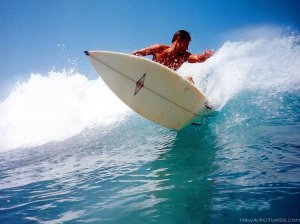
The inadequate identity of Sailor (or of any other…)
I always suffered of identity problems.
It seems self explanatory that identity is the sum of the qualities, mostly beliefs, that define a person’s image. The role this person has in society also feed the sense of identity. It is a common human perception to feel we are individual, unique beings, and we look for evidence to support this perception.
I am walking a very perilous philosophical path here, a walk that I will abandon for now while I keep pondering on it. The identity example serves me to bring you the latest news about life in the boatyard, although in a very elaborate way. This blog used to be about sailing but this deviation toward self questioning and rumination has been evident for quite a while now. Thanks for your patience. Sailing will resume as soon as possible.
Why all this fuss about identity?
I’ll answer saying that is a conceptual element that always puzzled me. I never bought the assumption that we have a true identity that define us and that we have to discover, or better assume.
Take first names. They are the first element of identity, clearly stamped on an ID card. You didn’t even pick it yourself, somebody gave it to you even before they could know anything about you. How much a Fabio am I in the end? This is a silly example that shows how identities are imposed by family and society, they depend on the fortuitous place you happened to be born in and often times they all clash with whom you really are. I can continue bringing more evidence. Are you defined by your job title? Your nationality? The color of your skin? Your gender? Your bank account balance?
Of course the answer is yes and no, and that’s why I find this fascinating. Because who we really are is way more vast than our identities, and it is our job to find out. Or not.
Deviation from the route #2
My tiny sailboat Tranquility is going through some serious transformations and I obey as her temporary keeper. Sometimes I believe the fantasy that boats find their servants by mean of seduction. Once they hooked their victim firmly they start to extract resources in form of time, dedication, labor and most of all money. The servant is usually unaware of the asymmetry of power at work and think they are the one in charge of the situation. They are not. However this relationship of convenience is one to be trusted, as usually boats give back love and dedication in time of need.
Likewise this physical transformation of the watercraft I inhabit reflects an inner transformation. I sense that from weak signals I receive from my surroundings. The fun thing about transformation is that we cannot foresee the outcome, or you would not go that way. Once you have the future it is already the past. It is like playing chess, when you know what is going to happen the game is finished and you have to start a new one.
I met a sadhu high in the Himalayan mountains long ago. He was summoned by a guesthouse mate who was very into spirituality and had met the fella on a bus station earlier that week. The guy was thrilled about the meeting and I was hanging around curious about what a mendicant dressed in orange had to say.
The sadhu looked at me in the eyes for five second at most, then uttered these words: “you are about to jump on the next level” or “this life is taking you to the next level” or something like that. The other guy received the response that he was a fresh soul, coming to earth for the first time and he missed to be with god very much. That explained why he was so spiritual at least in my mind. He was trapped in an unfamiliar reality and wanted so badly to be one with god. Then we asked the sadhu what was his duty in this life: he was here to learn how to convey the “grace” (the best word I can recall) not by words as he just did to us but by staring at people in silence.
The colorful scene happening in a cafe of a barren Himalayan village could be just a travel annedocte from long ago. It took me ten years to realize that the transformation he was talking about had happened not even one year after that “prophecy”.
One day of 11 years ago after a conversation with a friend during Easter holiday I quickly took the decision to leave my career, family and friends to move to a Venezuelan archipelago and run a sailboat charter business. We can ponder a lot about if all this is coincidence, self-fulfilling prophecy, magic, destiny and such without getting a spider from the hole (transl. of an idiomatic Italian phrase). What is evident is that the before and the after look quite different from each other, they are two completely separate identities. So which one is the right identity? Both? None?
I’ll borrow an image that Alan Watts borrowed form Buckminster Fuller (feel free to borrow it as well):
“ suppose we have a rope, and one section of this rope is made of manila hemp, the next section is cotton, the next section is silk, the next section is nylon, and so on. Now we tie a knot in this rope—just an ordinary one-over knot—and you find, by putting your finger in the knot, you can move it all the way down the rope. Now as this knot travels, it’s first of all made of manila hemp, it’s then made of cotton, it’s then made of silk, it’s then made of nylon, and so on. But the knot keeps going on. That’s the integrity of pattern; the continuing pattern, which is what you are. Because you might, you know, be—for several years—you might be a vegetarian, and you might be a meat-eater, and so on. And, you know, your constitution changes all the time, but your friends still recognize you because you’re still putting on the same show. It’s the same pattern that is the recognizable individual.”
The pattern stays the same even when conditions change.
If I looked at myself before the event horizon of my departure for Venezuela all I was good in making with my hands was rolling cigarettes and playing basketball. I was a discrete cook, a good basketball player and I smoked way too many cigarettes. In every other department my hands were clumsy, slow and uneffective.
In my childhood I used to play with my father’s tool. In the courtyard of the apartment building where I grew up I would shape scrap pieces of baseboard into medieval swords and play with other kids, or cobble up a rubber band slingshot out of wood, nails and clothes pins. It excited me but I quickly lost interest in working with my hands. I substituted it with daydreaming.
Wasn’t it much better to imagine to be a mechanical engineer and design and build car engines in the comforts of my mind rather going through the troubles of doing it for real? I had landed with both feet in the world of abstraction and I was very happy in it.
What kept me solidly anchored in the world of abstraction was another element. I was fascinated with the study of language. I took pride of reading books when I was a little kid and I would devour many good and not so good novels and stories and when I earned the title of kid who read the most I went to the trouble of lying about reading a long not so exciting novel about a prehistoric saber tooth cat to keep said title. The teacher gave me a pass on that but I remember from a look in her eyes that the jig was up.
Writing was a direct consequence of it. I of course dreamed about being a writer, and particularly a famous novelist. Not a best seller writer but a novelist whom both critics and public praise for depth of thought, irony and for creating marvelous worlds that stretch our sense of reality. Maturity and input from society values quickly made me understand that investing in such a path would be risky in its outcomes and very likely lead to being poor (something tells me that it was my destiny anyway…). I resorted to other occupations, deciding that being a psychologist was a good way to use language for something socially useful and make a living with it.
Life decided otherwise and this process of transformation brought me back to use my hands in conjunction with my mind to transform reality. The smooth surface of my palms began to show sign of hard spots. Knuckles quickly developed wounds one after the other, with open ones taking the place of old scars. My nails became in need of serious cleaning all the time. The perfectly comfortable dreams of designing custom made objects and structures faced the obvious lack of experience, training and skills. I learned that sailing is hard on your hands, and hard on your mind.
This transformation for sure affected the reality of my identity in a deep way and it was not foreseeable when the sadhu spoke to me. If I knew what was going to happen I would have started to ask myself questions, make judgements and ultimately give up the entire idea thinking that I could do better taking a different path. I am happy I did not, because ultimately I am at best marginal if not naive when it comes to making judgement on what’s good or bad for me.
Putting it all together
The liquid consistency of contemporary life finely expressed in language by Zygmunt Bauman certainly affects identity, it stretches boundaries and allows degrees of freedom that were unthinkable in the past. At surface this whole identity business is still chaotic in my mind as I reject definitions of nationality, age and such as important individual traits. However I recently realized that the knot that slides through the imaginary rope, the never changing pattern, the ultimate identity that works no matter what changes I go through in life is the identity of Writer. Writing has always accompanied me and it will, both as an urge and as a pleasure.
The fact that I am without any doubt a Writer is corroborated by at least four other people. One is a talented world creator who weaves poetic images and hallucinatory quests in the realm of fantasy. Another is a published science writer who likes to express his talent in fictional adventures. There is also a professional designer who uses words to draw humorous and moving pieces. Finally, a student and teacher of language in a rogue mission to shock and awe you through a mix of erotism and wit. They are the Rebel Writers, and I am a proud member. The proof that I am a writer is that I belong to this group of writers, because only writers, and a very special kind, are allowed.
Whatever the next level, whatever transformation is happening I will keep writing about it.


















